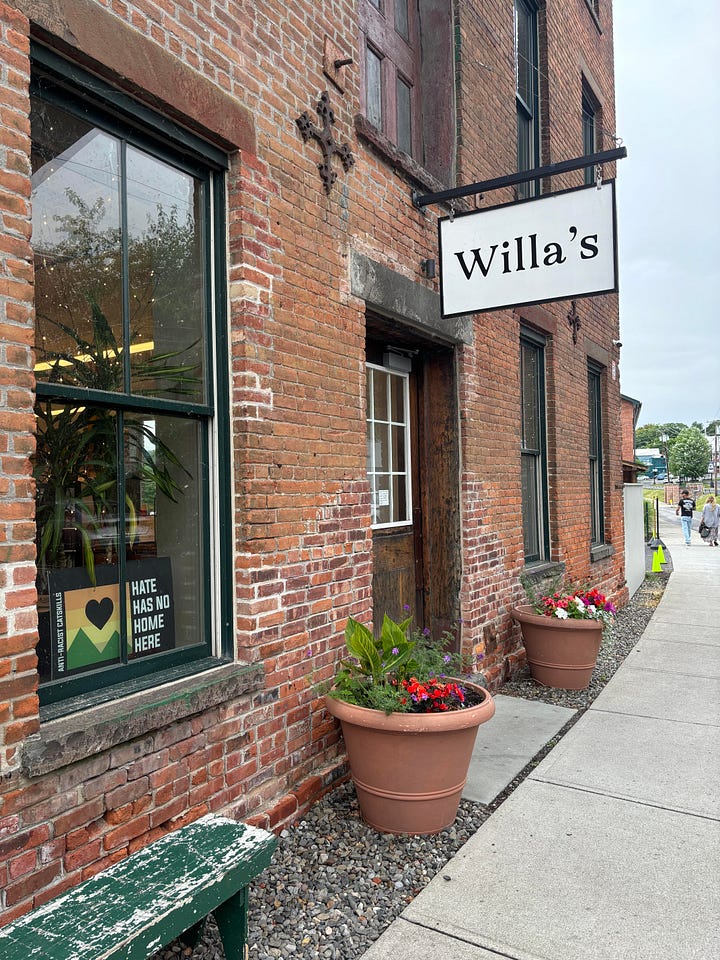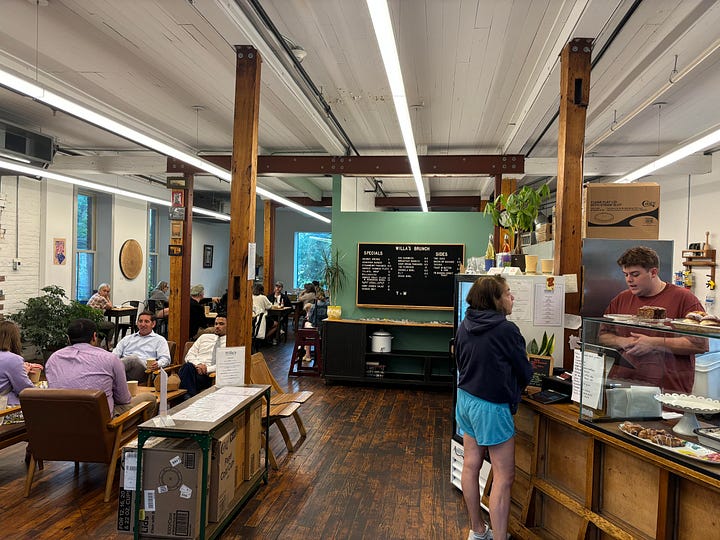Chronicle on the Road: The Thomas Cole House in Catskill, home of the Hudson River School of landscape painting.
Just an hour and a half from Croton via the scenic Taconic Parkway, the home of a pioneer of American landscape painting welcomes visitors. Riches await.
“Nature has spread for us a rich and delightful bouquet. Shall we turn from it? We are still in Eden; the wall that shuts us out of the garden is our own ignorance and folly… May we at times turn from the ordinary pursuits of life to the pure enjoyment of rural nature; which is in the soul like a fountain of cool waters to the way-worn traveler…”
— Thomas Cole, “Essay on American Scenery,” 1836
[Editor’s note: With this post, we inaugurate a new occasional feature for this newsletter, “Chronicle on the Road.” From time to time (or maybe more often, who knows) we will journey to places we think Crotonites might find relevant to their lives, or that they know and might want to revisit. In this first installment, we follow the Hudson River closer to its source, and closer to the source of many inspired depictions of this mighty waterway. To tell the story we have liberally borrowed from several historical sources, referenced at the end of this post.]
Thomas Cole was born in Lancashire, England, in 1801. But times were hard during those early days of the Industrial Revolution. In 1818, Cole’s family emigrated to the United States. He was only 24 years old when he first traveled up the Hudson River, discovering the Catskill Mountains and the vast landscapes along the river.
The house in Catskill which is now the centerpiece of the Thomas Cole National Historic Site was owned by the family of Cole’s wife, Maria Bartow. The couple moved into the house in 1836. Ten years later Cole purchased a plot of land from the family on which he built what he called his “New Studio.” Cole worked there until 1848, when he died of pleurisy. Maria preserved the studio as it was; thanks to her prescience, we are able to visit it and the property today.

In the Catskills, and in travels up and down the Hudson River Valley, Cole found bountiful inspiration. Although he is often credited with being the first American landscape painter, that is not really true, according to historian David Schuyler in his essential book about the Hudson River Valley, “Sanctified Landscape.” A number of important artists preceded him.
Nevertheless, Cole’s early paintings “electrified the artistic community,” Schuyler writes. He is certainly considered the founder of the extremely influential Hudson River School, which spawned many followers. Among them was Cole’s student Frederic Edwin Church, whose ornate mansion, Olana, is just across the Hudson via the Rip Van Winkle Bridge. (See map below.)
“The river scenery of the United States is a rich and boundless theme. The Hudson for natural magnificence, is unsurpassed. What can be more beautiful than the lake-like expanses of Tapaan and Haverstraw as seen from the rich orchards of the surrounding hills?” — Thomas Cole, “Essay on American Scenery.”
Unlike some later painters, who lugged their tubes of oil paint and their canvasses out into nature with them, Cole usually made sketches in charcoal or small preliminary oil paintings, complete with lots of notes, and then executed the final versions in his studio on a large easel. Another difference between Cole and other landscape painters is that Cole would often leave out the trappings of civilization that already, in his mind, marred the natural beauty he was capturing on canvas.
In his famous painting “Falls of Kaaterskill,” for example, Cole left out the refreshment stand at the top of the falls and the saw mill behind it. He sometimes would also add things that were not really there, such as a pond or other imaginary details.
“If the imagination is shackled, and nothing is described but what we see, seldom will anything truly great be produced either in Painting or Poetry,” he wrote to one patron who had advised him to capture landscapes with greater fidelity.
Most of the house that he, Maria, and their children lived in is open to visitors; there are some reproductions on the ground floor, but a number of original Cole paintings on the upper floor. Visitors can also explore the New Studio, where temporary exhibits are often put on display, and the grounds and gardens. While Cole lived there with Maria, the surrounding property was a 110 acre farm and orchard, producing hay, oats, corn, barley, apples, plums, peaches, pears, and cherries. Cole eventually moved his studio from the house to a section of the storehouse where some of these products were kept.
Cole was only 47 when he died of pleurisy, leaving behind four children under the age of ten, and his wife Maria, who was then pregnant with their fifth child. Maria lived on until 1884. Their daughter Emily Cole, an artist who used the New Studio as her own studio and exhibition hall, lived until 1913.
But Cole also left behind a school of art that, as the name implies, has taught us many lessons about how to appreciate the Hudson River and the lush forests and mountains through which it flows. He may have been guilty of reverse embellishment on his paintings by taking out the trappings of industry and “civilization,” but he can hardly be blamed for that—especially when, in our own age, we have had to fight so hard to keep industry from pouring chemicals into the river, or to force industry to clean up the river once it had already been polluted.
At such moments, we can thank Cole for giving us so many glowing images of what the Hudson River Valley once was, and what in our dreams it might be again.
When you go:
The visitor’s center at the Thomas Cole National Historic Site features a number of interesting books and souvenirs. While up there, you might also want to visit the historic town of Catskill. If you do, a stop for brunch at Willa’s on Water Street is highly recommended.


You can also visit Frederic Church’s Olana on the same trip, if you have the energy, or come back another day. Olana is a quick drive across the Rip Van Winkle Bridge, or a six mile walk there and back with some significant elevation increase on the Olana side.
References:
Thomas Cole, “Essay on American Scenery,” on sale at the visitor’s center.
“Thomas Cole’s Creative Process,” on sale at the visitor’s center.
Thomas Cole National Historic Site, “2024 Guide Book,” ditto.
David Schuyler, “Sanctified Landscape: Writers, Artists, and the Hudson River Valley, 1820-1909.”
This post is free to all readers, as are the majority of our stories. But we can’t publish The Croton Chronicle without your continuing support. If you have not already done so, please consider taking out a paid subscription. It’s a bargain—$5/month or $50/year—and you will be supporting local journalism in its time of crisis.
To share this post, or to share The Croton Chronicle, please click on these links.
To leave a comment please click on this link.









So nice to see you doing this!
We’ll have to discuss more sometime.